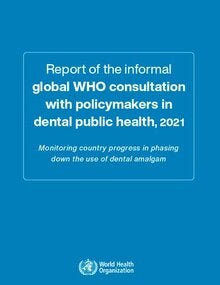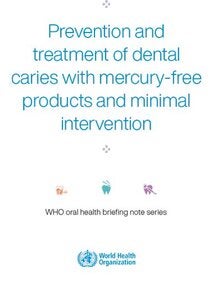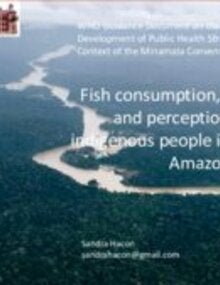Mercury is toxic to human health, posing a particular threat to the development of the child in utero and early in life. Mercury exists in various forms: elemental (or metallic); inorganic (e.g. mercuric chloride); and organic (e.g., methyl- and ethylmercury), which all have different toxic effects, including on the nervous, digestive and immune systems, and on lungs, kidneys, skin and eyes.
It has been estimated that among selected subsistence fishing populations, between 1.5/1000 and 17/1000 children showed cognitive impacts caused by the consumption of fish containing mercury. Mercury releases in the environment result mainly from human activity, particularly from coal-fired power stations, residential heating systems, waste incinerators and as a result of mining for mercury, gold and other metals. Once in the environment, elemental mercury is naturally transformed into methylmercury that bioaccumulates in fish and shellfish.
Human exposure occurs mainly through inhalation of elemental mercury vapors during industrial processes and through consumption of contaminated fish and shellfish. Interventions to prevent environmental releases and human exposure include:
- eliminating mercury production and use in mining and industry;
- promoting use of clean energy sources that do not rely on burning of coal;
- switching to non-mercury thermometers and sphygmomanometers in health care; and
- implementing safe handling, use and disposal of mercury-containing products and waste.
- Mercury is a naturally occurring element that is found in air, water, and soil.
- Exposure to mercury – even small amounts – may cause serious health problems and is a threat to the development of the child in utero and early in life.
- Mercury may have toxic effects on the nervous, digestive, and immune systems, and on lungs, kidneys, skin and eyes.
- Mercury is considered by WHO as one of the top ten chemicals or groups of chemicals of major public health concern.
- People are mainly exposed to methylmercury, an organic compound, when they eat fish and shellfish that contain the compound.
- Methylmercury is very different to ethylmercury. Ethylmercury is used as a preservative in some vaccines and does not pose a health risk.
Mercury exists in various forms: elemental (or metallic) and inorganic (to which people may be exposed through their occupation); and organic (e.g., methylmercury, to which people may be exposed through their diet). These forms of mercury differ in their degree of toxicity and in their effects on the nervous, digestive, and immune systems, and on lungs, kidneys, skin and eyes.
Mercury occurs naturally in the earth's crust. It is released into the environment from volcanic activity, weathering of rocks and as a result of human activity. Human activity is the main cause of mercury releases, particularly coal-fired power stations, residential coal burning for heating and cooking, industrial processes, waste incinerators and as a result of mining for mercury, gold and other metals.
Once in the environment, mercury can be transformed by bacteria into methylmercury. Methylmercury then bioaccumulates (bioaccumulation occurs when an organism contains higher concentrations of the substance than do the surroundings) in fish and shellfish. Methylmercury also biomagnifies. For example, large predatory fish are more likely to have high levels of mercury as a result of eating many smaller fish that have acquired mercury through ingestion of plankton.
People may be exposed to mercury in any of its forms under different circumstances. However, exposure mainly occurs through consumption of fish and shellfish contaminated with methylmercury and through worker inhalation of elemental mercury vapours during industrial processes. Cooking does not eliminate mercury.






